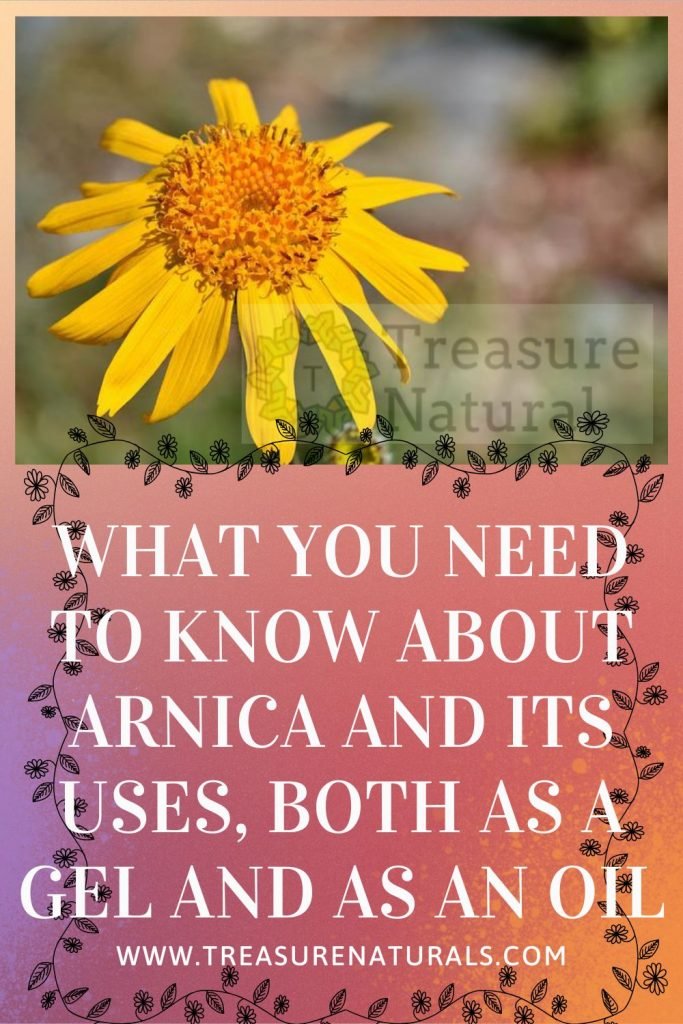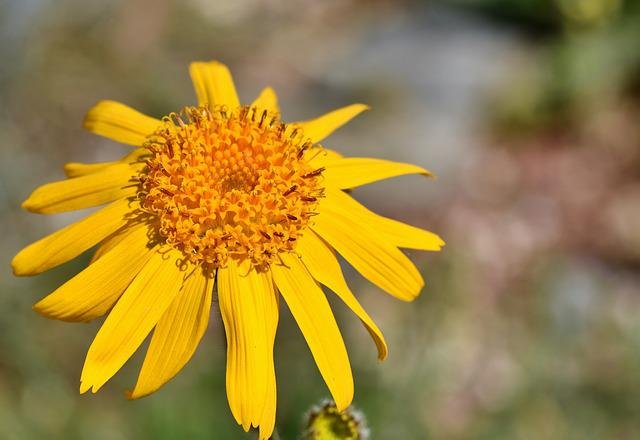
Let’s discover all the pain-relieving and healing properties of arnica, a real natural drug for any eventuality, both as a gel and as an oil. Widely used in sports, it soothes pain due to trauma and burns, reduces swelling, absorbs bruises and also helps to heal wounds. Here’s everything you need to know about this great natural remedy.
The plant: arnica montana
Arnica montana is an annual or perennial herbaceous plant belonging to the Asteraceae family. It was already known at the time of the ancient Greeks, but its first written appearance did not take place until 1731, among the pages of a gardening manual.
Arnica grows spontaneously in the mountainous areas of the Alps. It is very common, for example, in the whole area of the Dolomites, in Trentino Alto Adige. We also find it in North America and Central Europe.
It develops bright yellow flowers, very similar to daisies, which are mainly used to make homeopathic creams and gels. In fact, it is precisely from them that precious essential oils are extracted.
It is used by the mountain populations of France to make the Tabac des Vosges mixture, which has now become synonymous with the plant itself.
Arnica therapeutic properties
Those who know it know that this phytocompound can be used as the basic principle of ointments and tablets, capable of healing many inflammatory states, such as tendonitis and sciatica.
- The cream preparation in particular is used to calm swelling and blood effusions, from those to the gums to insect bites.
- There are good uses for the treatment of osteo-articular disorders, slight phlebitis and for the treatment of diseases such as osteoarthritis.
- In fact, this plant, in addition to reducing swelling, is also suitable as a natural analgesic. For this reason, the ointment or the infusion can also be applied on wounds, bruises and for the treatment of hemorrhoids.
Arnica gel
It is also recommended as a post-traumatic remedy for surgery, for the treatment of rheumatism and to soothe the discomfort caused by minor burns. Also for this reason, arnica gel or ointment is often used to treat bruises in children. But the uses of arnica gel are many, since it can ensure benefits in case of muscle injuries such as tears and strains, aches, sprains and insect bites.
It is one of those natural remedies that should never be missing among those we keep at home: there are active ingredients such as aescin, bromelain and rutin, which help the reabsorption of post-traumatic and inflammatory edema.
The above also applies to arnica ointment. If we want, the main difference is that the ointment can work in synergy with a heat source (for example a bandage covered with a woolen cloth), while the gel is preferred for the treatment of severe bruises or joint inflammation for which a cold treatment is useful.
Arnica decoction
The decoction of arnica montana flowers can help to contain the consequences caused by accidents or serious infections, such as nosebleeds, numbness, delirium and mental states of unconsciousness. Being a perfect sedative, it can also control nausea and vomiting.
Arnica herbal tea
Unlike what you might think, mountain arnica tea should not be drunk at all, but applied on gauze to make compresses.
- Fresh flowers can be found in herbal medicine: two tablespoons are needed for a liter of water, to be boiled for no more than 5 minutes. The liquid thus obtained is sufficient for one application; it should be filtered and left to act for about 20 minutes.
- The flowers can also be used to make a precious decoction against insect bites: 20 grams of arnica flowers and roots are enough to macerate for 10 days in 100 grams of alcohol.
- The mixture must therefore be diluted in 1 liter of water and applied in this way. For bruises and bruises you can also infuse the leaves: 15 are enough to boil for 15 minutes.
Warning: do not use fresh flowers to prepare salads, as they are poisonous!
Arnica oil
Not everyone knows that in the form of oily macerate, this plant has antioxidant properties that protect the skin from aging.
Arnica oil is obtained from the flowering tops of this perennial plant which is then macerated in a neutral vegetable oil, usually sunflower oil. This oily macerate concentrates the active ingredients of the flower.
Contains linoleic acid (omega 6), oleic acid (omega 9) and traces of essential oil, which give it antiseptic and antioxidant properties.
The oil is anti-inflammatory and healing. Effectively calms various pains (back pain, sprains, etc.) and prevents bruises. It is also a useful oil for a relaxing massage that is very appreciated after a sporting session, even if a little fat.
We advise you to choose a cosmetic and organic quality oil. It must be 100% pure and must not contain additives or preservatives.
To conclude the overview of this oil we add that it is also effective in case of sunburn, mild irritation or redness.
Apply a few drops directly to the affected area and repeat the operation five or six times a day (for two days), stimulating blood circulation.
Benefits of mountain arnica
Sports enthusiasts know that arnica is also a natural remedy for muscle contusions: from sprains to cramps, up to contractures.
Furthermore, a few drops of mother tincture based on this plant also act as an excellent cardiotonic.
However, anyone with one of these ailments can find quick relief from aches and pains:
- acts in case of hypertension and cardiovascular disorders
- effective against headaches, dizziness, feeling of heavy legs and fragile capillaries
- inflammation of the urogenital system, such as cystitis, and hypermenorrhea
- flu, fever, cough and aphonia
- seasickness or motion sickness
- bad breath and flatulence
Use in the food and cosmetic industry
Arnica montana is a preparation found in a myriad of foods and drinks such as pre-packaged puddings, candies, jellies and desserts.
It is also a well-known ingredient in the cosmetics industry:
- is able to fight acne and dandruff. He soothes chapped skin, from that of the scalp to that of the lips.
- As an antiseptic and vaso-stimulator, ampoules and lotions are able to counteract cellulite and hair loss, and therefore to placate the consequences of important diseases such as alopecia.
Arnica contraindications
There are no real contraindications regarding the use of arnica, if not the usual ones relating to everyone’s allergic reactions.
As always, its use is also not recommended for those who are pregnant or breastfeeding.
The dosage therefore varies according to the use made of the product as well as the product itself. Always refer to a naturopathic doctor or homeopathic pharmacist before starting a treatment.
Dosage of ointments and dry extract

Here are some indications on the posology:
- in general, 5 granules at 9CH 3-4 times a day are enough to solve the most common ailments.
- If you use the lozenges to dissolve under the tongue, 2-4 are enough every 3-4 times a day. It shouldn’t exceed 16 USD in cost.
- The mother tincture, on the other hand, should never be used pure, but always in the order of 1 to 5 parts of water.
- As for the ointment, the percentage of extract used must not fall below 40%. The tube or jar that you will find in homeopathic pharmacies and organic shops costs from 6 to 14 USD.






